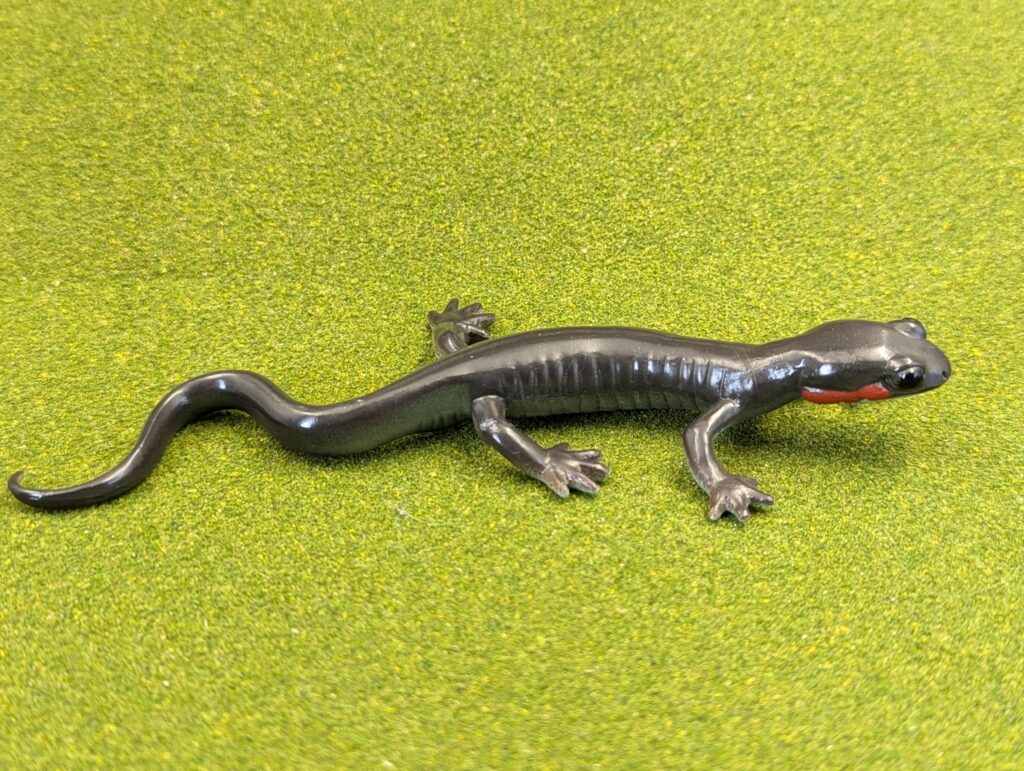
Over the course of the summer I reviewed the entirety of Safari’s famous and sadly discontinued Tennessee Aquarium Salamanders line, a set of 7 life-like and life-size models released in 1995 (one in 1997) and retired in the mid-2000s. But I also hinted at a spiritual successor that, while not in the line, fits alongside them in theme, style, and production…also geographically. If the Tennessee Aquarium series is mourned for its disappearance, this one is mourned because many people didn’t even know it existed until it didn’t anymore! I am speaking of the red-cheeked salamander model commissioned for sale by the Great Smoky Mountain shop (called Smokies Life Shop now), and produced by Safari Ltd with item number 677104. I suppose the title of the post gave that away…
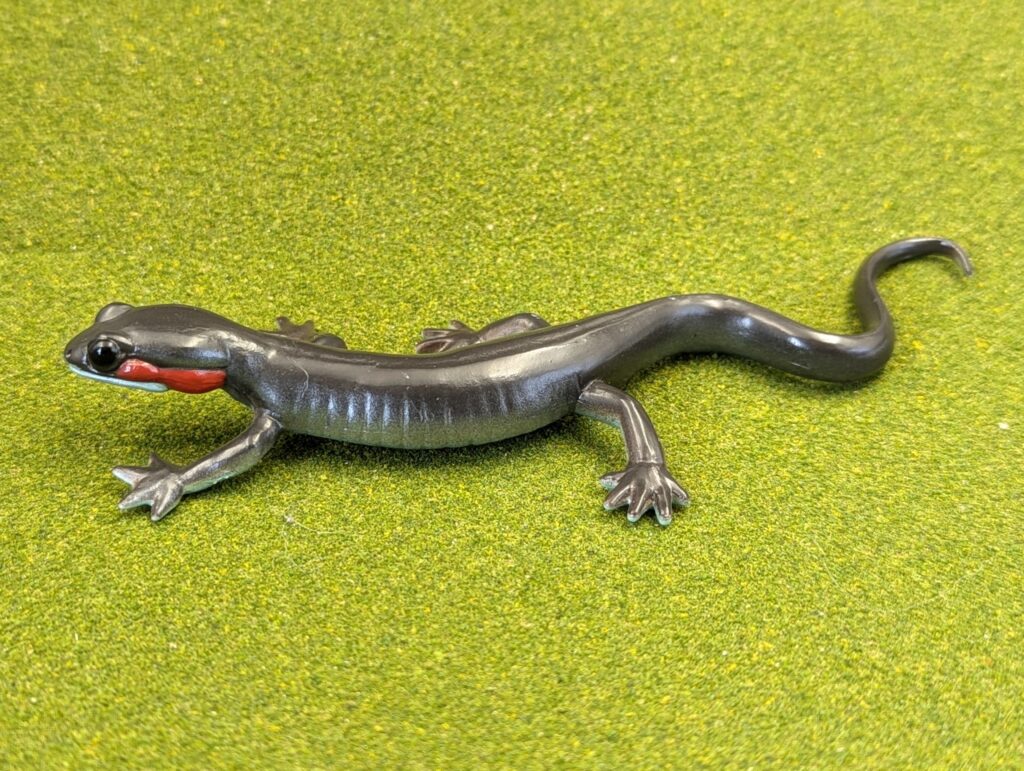
Over the years, Safari has been commissioned at various times to produce models for facilities and organizations to promote or enhance signature specimens or species. The Marsh Education fish is a great example of that; figures made for one place, to act as merchandise, promotion and education. It is unknown how many are out there (Safari does not advertise them) although there are others (I’ll get to another one of those eventually!) but whenever collectors learn about them, it’s always exciting! Plus we learn about a new place. In this instance, the Great Smoky Mountains shop commissioned a run of a local salamander species in 2004, and Safari clearly took the task very seriously.
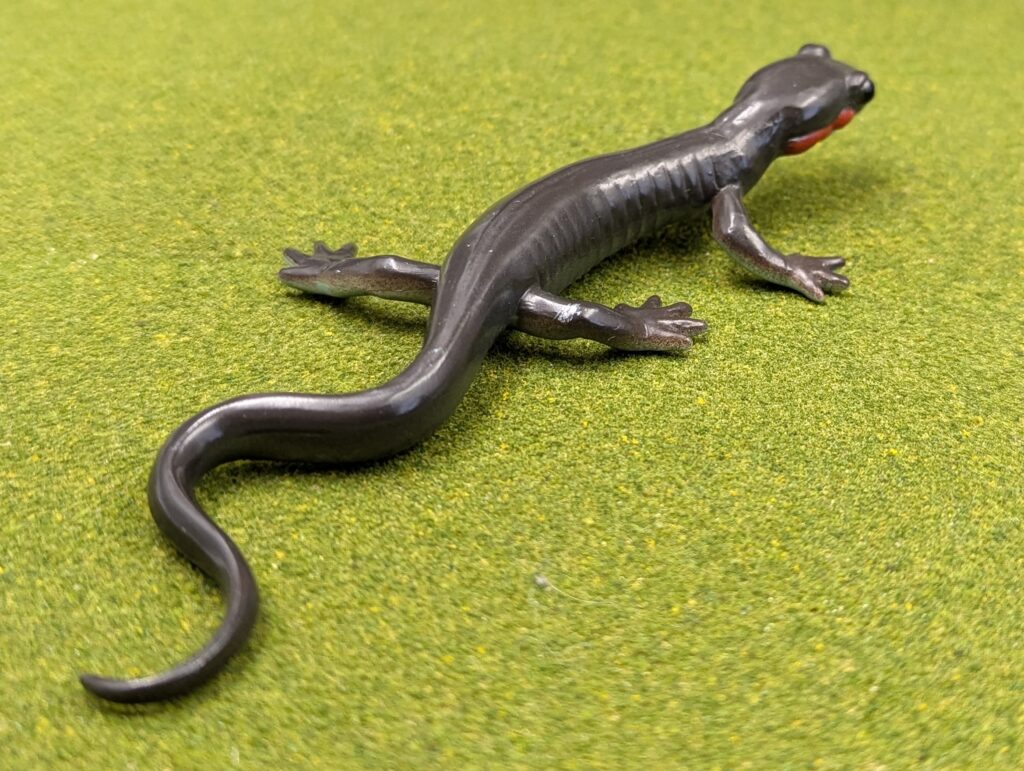
The red-cheeked salamander, Plethodon jordani, is found in North Carolina and Tennessee, with a separate population in a small part of Georgia. They prefer habitats in high elevations (lowest they are normally found at is 2850ft, but often much higher); those high altitudes are the Great Smoky mountains, where they are most common. Some populations do appear in lower altitudes, but only if local conditions are climatologically similar to the higher regions. They prefer cool and wet environments, in both deciduous and conifer forests, and are plentiful in thick forests with heavy leaf and moss cover. They are primarily nocturnal, emerging from under logs or moss at night to hunt for arthropods, snails, and other invertebrates, while may find themselves prey to other salamanders, garter snakes, and some birds.

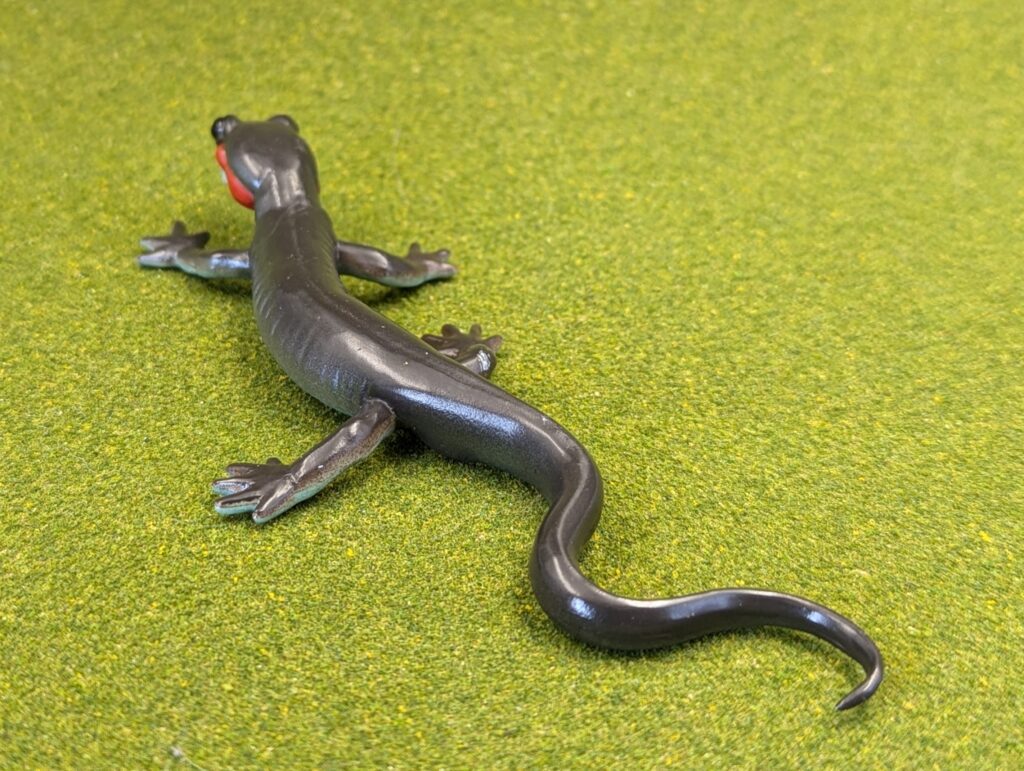
Red-cheeked salamanders can defend themselves against predators by producing a sticky, noxious mucous from the base of the tail; they will also bite or even wrap their tails around the heads of snakes. And, if needed, they can drop their tails to escape. This has also led to a sympatric but much smaller species, the imitator salamander, mimicking the red-cheeked salamander. Although their life history is not well understood, they are members of the genus Plethodon, the lungless salamanders (like a few of the Tennessee Aquarium species) and probably have similar requirements, including a moist enough environment for respiration through their skin. They are modest sizes, averaging about 12.5cm (larger at lower elevations), with the tail making up half the body length. The IUCN lists the red-cheeked salamander as Near Threatened due to the limited habitat range, although the vast majority of this range is within the Great Smoky Mountains park which offers some protection. External threats can include climate alteration, acid rain, and degradation of wooded habitat due to invasive pests.
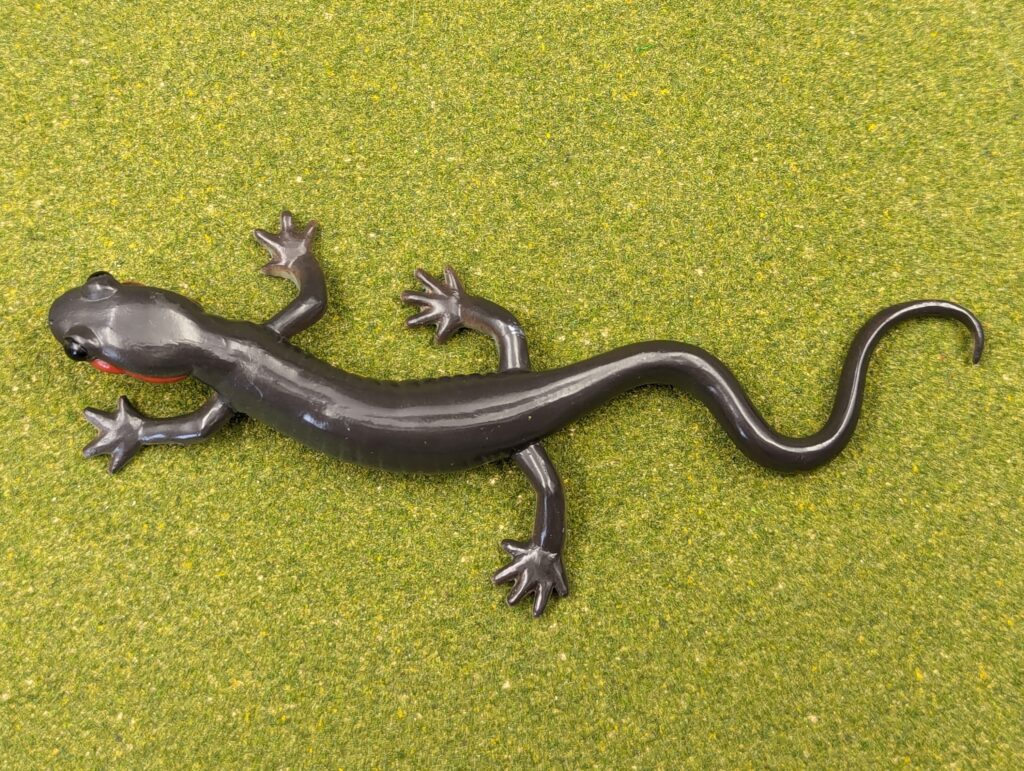
The figure itself is a stunning little model. It is skinny and wiggly, a curve to the body and numerous serpentine bends in the tail. The body is smooth smoth, other than numerous costal grooves along the sides, as well as folds at the base of the tail and around the cloacal bulge. The head is lifted off the ground at the shoulders, while the rest of the body is mostly flat against the ground. The feet are all planted firmly, but the front legs are doing a push-up to lift the head. This all combines to give an alert, active appearance to the model. At a quick glance, the figure could be mistaken for the Safari yonahlosee salamander but further inspection (comparing in hand) just reflects that both of these Plethodon species are similar in general appearance, so it makes sense that the figure would be similar too. The overall length of the model, measuring as best as possible along the curved tail, is about 15.9 cm, giving a scale of 1:0.8 … or 1.25:1; in other words, larger than the real average size adult…and probably at the maximum size of any specimen.
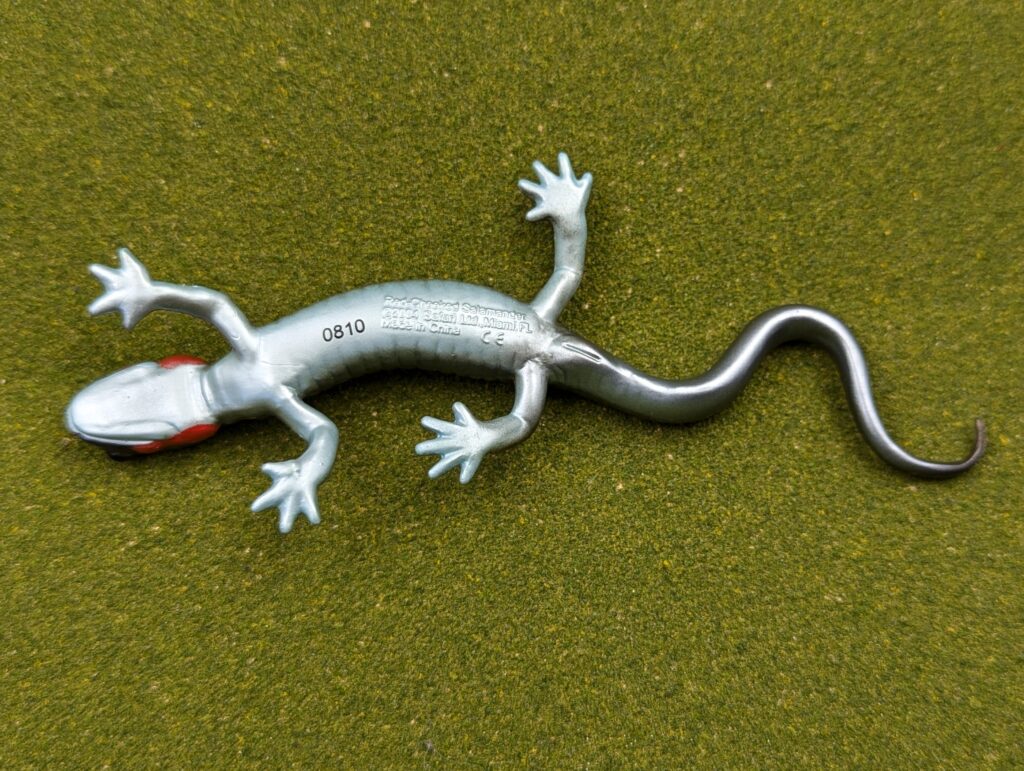
In terms of colouring, the overall upper body is a uniform, dull black. This same colour extends to the upper surface of the legs and feet. The prominent, bulging eye sockets are also this same colour, while the eyes themselves are painted a very shiny black. The incised nostrils are also the dull black. At the midline along the body, from the lower jaw to all but the tip of the tail, the black transitions into a vaguely bluish silver, which is again uniform throughout. The entire figure is finished with a shiny gloss. Of course, the red on the cheeks is the unmistakable feature; as in the real animal, this is painted as a red blotch along the cheek and upper jaw on both sides, extending from just behind and below the eye to the joint with the neck. Overall, this represents the real animal well, which may see more gradation from dorsal to ventral colours, but seems close to natural.
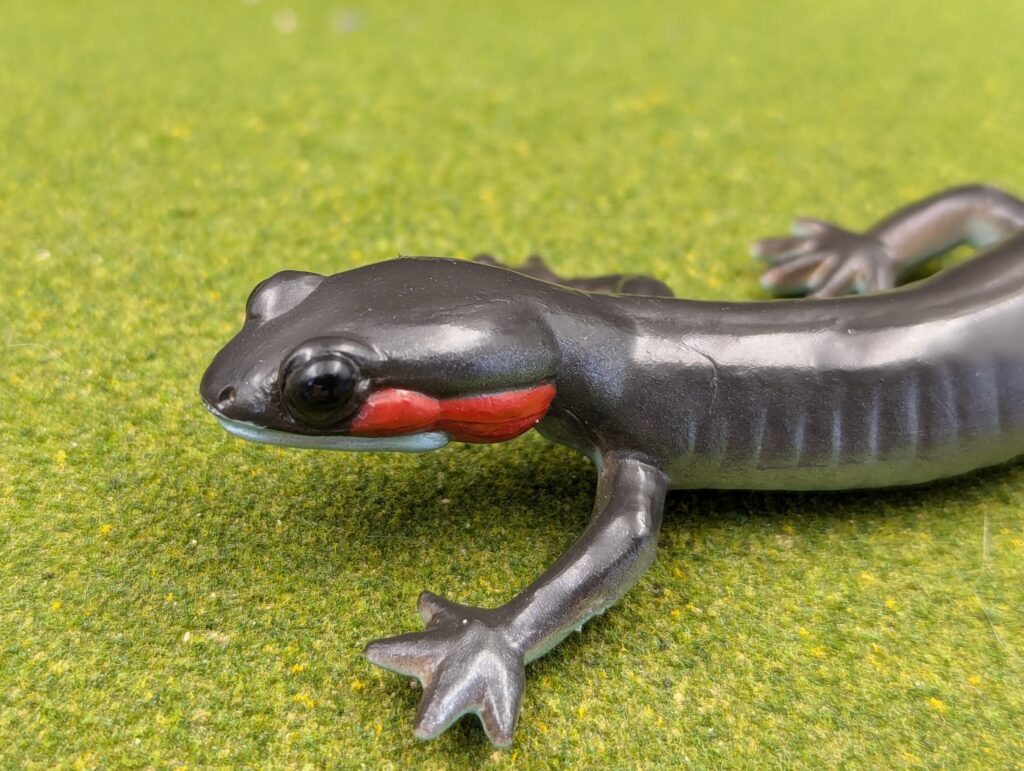
It goes without saying that this is an amazing figure, and Safari really went all out for it–makes sense, since the Smoky Mountains shop did commission it specifically. The care and detail given to this little figure makes it a shame that it was so limited in both time and market; I can’t even recall how I learned about it, but as soon as I did I immediately tracked down the shop and ordered two because I knew it would be valued and valuable…and to this day, at least 12 years later, I have no idea where the second one went 🙁 While I can’t say enough good things about it, I also know that the chances of finding one are extremely limited; they’ve been out of the shop for many years now. But it does serve to remind us that Safari can make awesome salamander figures, and we’d love to see more! While not part of the Tennessee Aquarium series, the red-cheeked salamander figure fits right along with them, which is why I did add it to that Brand category, just to make it more findable. Hopefully there are more, similar models to add eventually. Also, I think we should encourage more facilities to commission Safari models of their marquee animals–what a way to both promote and educate!
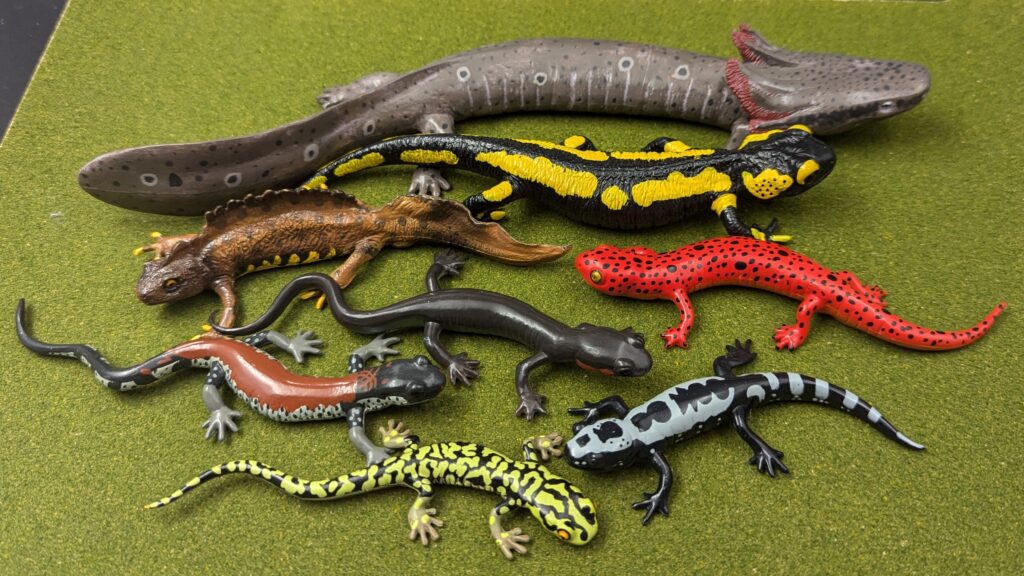
EDIT — As a final aside, it was realized among the bloggers, this is post 1000! The first was on August 21, 2019 (with a few migrated from the DinoToyBlog dated earlier). Amazing accomplishment for all of us as we continue to catalogue all of the amazing figures representing the animal kingdom! Looking forward to the next 1000!
Disclaimer: links to Ebay and Amazon on the AnimalToyBlog are affiliate links, so we make a small commission if you use them. Thanks for supporting us!




Even though these are big for my tastes (most of them) I am tempted to hunt them down and complete the collection (maybe except the red-cheeked) just because, well, it’s just one of those sets, just like the Marsh Education fish…
They’re as iconic as the other Safari -collaboration sets, and probably less known.
The size is tricky, but they’re remarkably well made
I still have some available in my store that I ordered about 10 or more years ago from the Smoky Mt Shop. I’m always conflicted about selling them, as I know they are valuable and could command a high price, but it seems wrong to do so. So I generally save them for “by request” or for inclusion with educational sets we put together in the store for the Great Smoky Mountains. These are some of the best salamander figures (along with all the Tennessee Aquarium figures) produced by any brand, ever. Full stop. Thank you for reviewing all these figures. They are deserving of all the adoration they receive!